Is it Harmful to Use a Kiddie Leash on a Child?
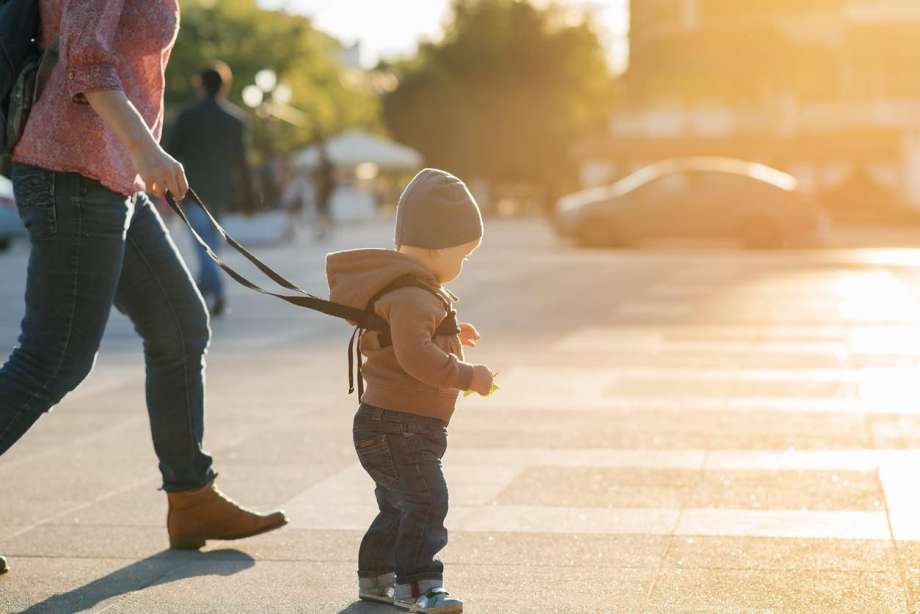
Toddlers are amazing — one minute you feel as if you are trying to drag around a boulder, and then in the blink of an eye, they turn into a mini version of The Flash. If you are a parent who has a runner on their hands, then you may be looking for easy ways to keep your kids at arm’s length.
For those wondering about kiddie leashes, we examine the benefits and risks of using this type of safety harness.
Related: Simple Steps to End Toddler Bedtime Struggles
Child Leashes: Are They Helpful or Harmful?
There is a lot of debate surrounding the use of child leashes. Critics argue that implementing these harnesses equates to lazy parenting and that it is degrading to the child, comparing it to the tethering of an animal.
They also note that there are better and safer products on the market. In contrast, proponents point out that all children are different. Some kids are naturally more likely to wander and safety should always be the most important thing, no matter how it looks to others. Here is a breakdown of both sides of the argument.
Advantages of a Child Leash
1. Strollers, Baby Carriers, & Hand Holding Are Not Always Viable Options
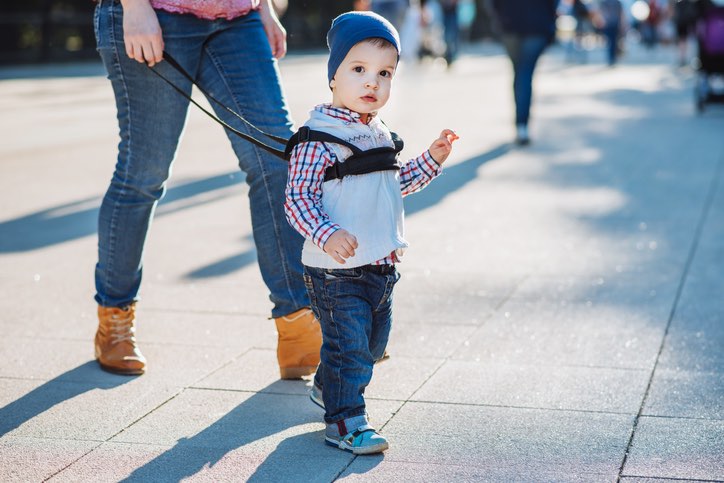
Young children are notorious for their selective hearing. You can tell them a hundred times to keep their hands on the cart or to stay by your side, but they always seem to veer in the opposite direction. This lack of impulse control can be a nightmare for the parents of active toddlers, especially when they have other small children in tow.
While critics argue that strollers, baby carriers, and hand holding are better options, these are not a possibility for the mom of three who is trying to navigate the grocery store or the dad of four who is attempting to make his way through an amusement park.
The last thing any parent wants to do is to lose their child in a public place. This makes kid leashes the most realistic solution for the parents and caregivers of multiple young children who are trying to walk through a crowded space.
2. Safety Leashes Promote Physical Activity
There is also the argument that these safety harnesses can help to prevent container baby syndrome. Leaving your child in a device like a stroller or a carrier limits their movement.
The American Academy of Pediatrics notes that this can be detrimental to their gross motor development and it can even lead to delays. For the younger tykes who try to run off regularly, kiddie leashes can allow for more physical activity, which improves their coordination, balance, and overall health, while also ensuring their safety.
3. Some Children Are More Prone to Wander
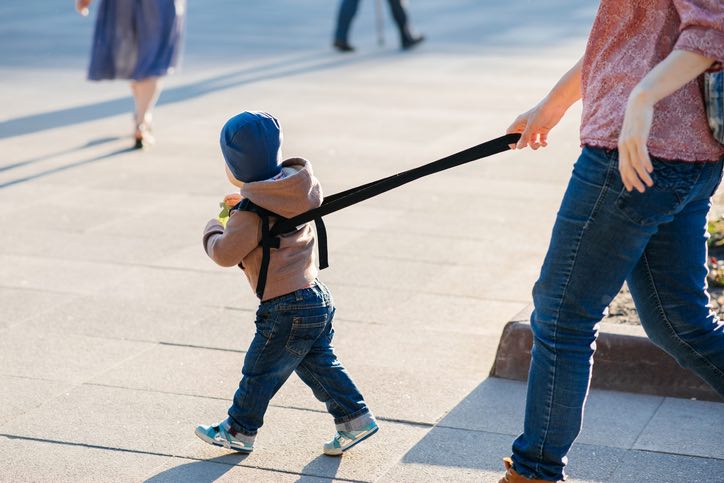
Children who have been diagnosed with special needs, autism, and ADHD tend to be more likely to roam. In fact, researchers have found that “nearly half of children with autism spectrum disorder (ASD) attempt to wander or bolt from a safe, supervised place.
More than half of these wandering children go missing – often into dangerous situations. Importantly, the researchers found evidence that autism-related wandering does not stem from inattentive parenting.”
Furthermore, what many people don’t realize is that this urge to wander away often stems from sensory triggers like bright lights, loud noises, and temperature changes. This means that the action can happen suddenly and without any warning, making places like parking lots and airports hazardous for kids with these diagnoses.
4. Some Environments Are Not Safe for Unpredictable Young Children
Family vacations are a wonderful time for bonding and allowing your kids to experience different parts of the world. However, when planning your adventure, it will likely not be advertised that your hike’s breathtaking views are along the side of a rushing river or that the majority of the Grand Canyon does not have a safety rail. Suddenly, these scenic places become quite scary, making a tether an enticing choice.
5. Safety Leashes Are an Insurance Policy in Urban Environments
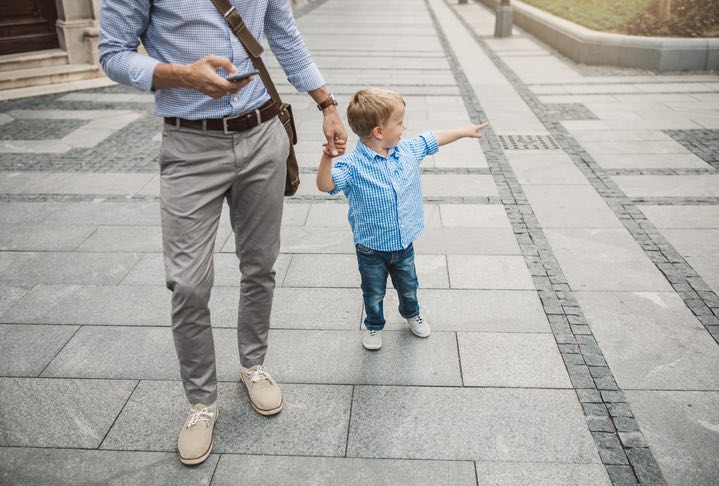
Until your little one is old enough to follow instructions to the letter, this child safety harness can give parents some peace of mind while they are teaching their toddlers crucial life lessons. For example, when your toddler is learning the importance of holding hands and looking both ways before crossing a busy street, it is likely that there will be moments when they forget this rule.
If they step out too soon, the tether gives the parent solace that they can maintain control and pull them back to safety. This is ideal for people who live in urban environments, utilize public transportation, or regularly walk from place to place.
Disadvantages of Child Leashes
1. Safety Leashes Can Limit Your Child's Ability to Grow as a Person
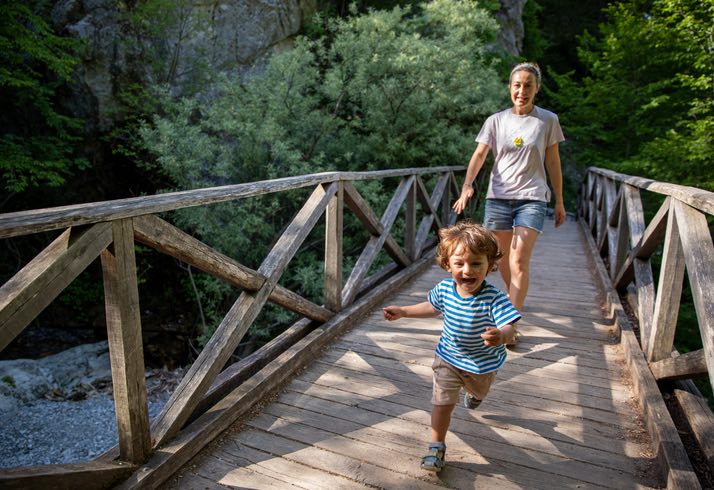
While we don’t want our kids running into oncoming traffic, we do want them to explore and investigate the world! Having certain freedoms at the park or an indoor play space allows them to build a sense of independence and confidence in their ability to do things on their own. With a tether, you take away their chance to enjoy and engage in their environment truly.
2. Safety Leashes Can Pose a Safety Risk
With child leashes, safety is always a major concern. While the Consumer Product Safety Commission has not had any recalls on these types of products, they can still pose a risk. Pediatrician Dr. Benjamin Hoffman is a nationally recognized child injury prevention expert. He is also the soon-to-be President of the American Academy of Pediatrics.
In a multitude of interviews, he has stated his concerns for child safety when these types of products are being used. More specifically, Hoffman noted that a child could trip over the leash and potentially harm themself. Additionally, he addressed the possibility of entanglement or strangulation if the child is not being appropriately supervised while wearing the device.
Other parenting experts also remark that while your intentions may be focused on child safety, if the harness jerks them back when they are trying to run off, it can have a similar physiological effect to hitting.
This can be extremely detrimental to their mental health. However, proponents of the toddler leash do point out that yanking a child back while holding their hand would produce a similar result.
Types of Child Leashes
When shopping for any type of tether, make sure to look for an option where the leash can detach. This allows your child to stay safe when they are free to roam in a public place. Additionally, for younger kids, the harness-style tethers are your best bet because the leash attaches to the child’s back, making an escape less likely.
Finally, always remember the purpose of this device — safety. Therefore, avoid products that extend too far. This defeats the purpose of the tether and puts your child in danger of tripping, entanglement, or even running too far into the road.
Basic Harness & Leash
These are simply a harness and a leash. Some versions come with attached butterfly wings or printed characters on the back, while others are just a basic tether. These are ideal for both young and older children.
Backpack Leash
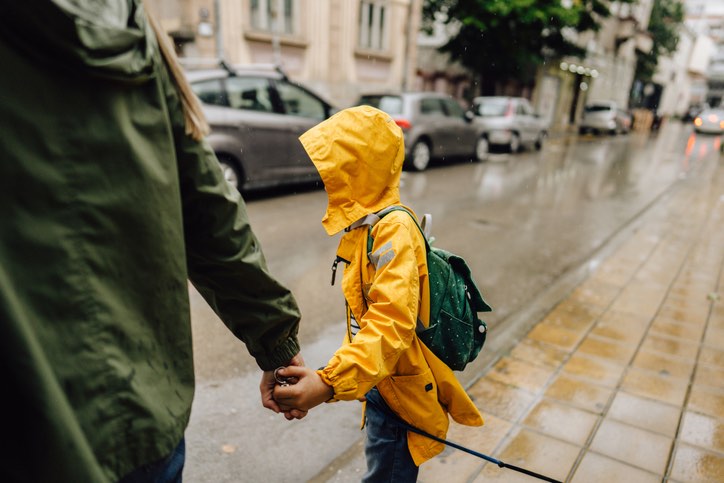
These are the most popular options for young children because they come with exciting designs and the option for storage! Kids can choose from fun patterns to plush animals. These products are more tailored towards toddlers and preschool-aged children.
Wrist Leash
These tethers can be used for any age, but they are usually better suited for older kids who are more likely to follow instructions and are therefore more likely to keep it on.
The Takeaway
Child leashes will likely continue to be a point of controversy among parents and health experts for years to come. If you do choose to use this type of device, remember that this should only be used in environments where the child’s safety is a concern.
Additionally, close supervision is imperative while using this safety tool. Finally, in order to avoid accidental injuries, always take it off the tether or remove the leash portion of the device when it is not needed.

